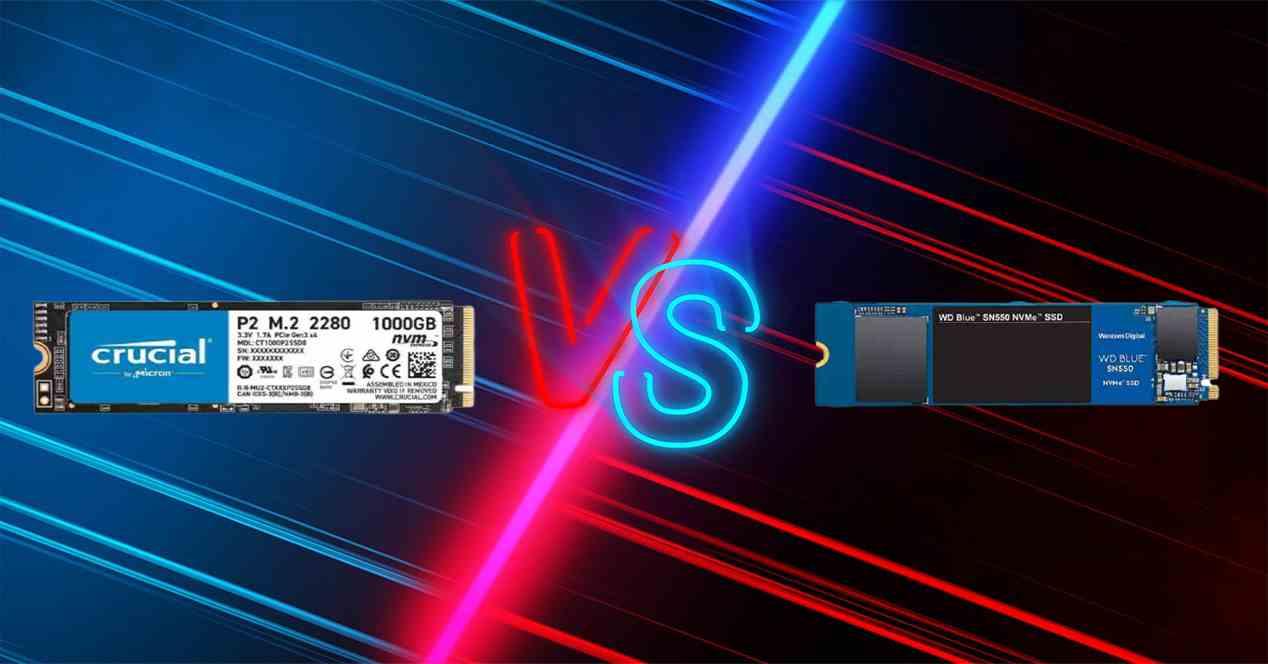There is no doubt that NVMe SSDs are going to become an indispensable part in every PC, especially those that are used for playing games. And it is that little by little and at a constant rate, more and more games recommend to install them in a storage of this type. All this without forgetting the advantages they generally provide over a conventional hard drive, which come down not only to a higher transfer speed, but also to a shorter search time and the fact that they do not do not use moving parts.
However, today an NVMe SSD is expensive hardware at the moment, especially in the capacity / price ratio, where hard drives have an advantage and will maintain it for the next few years. It should be noted that the advantages offered by a NVMe SSD software can never be matched by a hard drive and these are not only reduced to slower load times and installation speed.
This is why we decided to make a comparison of two models of NVMe SSD under PCI Express interface with a capacity of 1 TB, with very similar characteristics and a good performance ratio for the price of each. We are talking about Crucial P2 and WD Blue 550
Features Crucial P2 1TB
The Crucial P2 is a low-end NVMe SSD, because although it is compatible with a PCIe Gen 3 interface, it does not saturate the data bus, since its speed of the maximum transfer is 2.4 Gb / s read and 1.8 Gb / s writeIn either case, this figure is achieved by sequentially accessing data from the SSD. The reason for the slower transfer speed, as well as its price, is that it uses RAM as a cache between the flash controller and the PCI Express port.
The Crucial P2 uses the host memory buffer which is based on the fact that it can use the system RAM by accessing it through the PCIe interface and a built-in DMA unit and therefore we are faced with a DRAM-free model. In passing, we specify that it is not compatible with the PlayStation 5, not because it does not respect the minimum bandwidths of the specification, but because it does not have DRAM memory integrated into it. ‘unit M.2.
As a last point, Crucial P2 does not support PLP or power loss protection, which makes it not at all recommended for a server-type system that needs to run 24/7 and where the devices are recommended to have voltage drop measurements. So throw it out of the box for a data center or server.
1 TB WD Blue SN550 Specifications
The WD Blue SN550 has very similar specifications to the Crucial P2, as it is a 2.4Gb / s and 1.75Gb / s sequential read and write speeds respectively. So at first glance it might seem a bit slower unit in this regard, but later on you’ll be surprised. In all cases, it should be noted that in the applications at the time of being used it is the random accesses to the SSD and not those which are done in series or sequential abound.
The reasons for the bandwidth or lower transfer speed in the WD Blue SN550 are the same as in the Crucial P2, since we are also facing an SSD called DRAM-Less. So, despite using a PCI Express interface, the speeds of standard NVMe SSDs are not achieved, although they are faster, they are a better option than M.2 SATA SSDs, which are affected by the bottleneck of said interface.
The biggest limitation, which has sparked controversy, is the capacity of the SLC cache of the WD 550, which is very small and severely affects the transfer of large files, which ultimately reduces the performance of the WD Blue SN550. Although if we’re right we have to say that we don’t know if the Corsair P2 has the same handicap, so it’s best to focus on the performance differences between the two SSDs.
WD SN550 and Crucial P2 compared


We come to the part that interests us, which is how the Crucial P2 compares to the WD SN550 in terms of performance and that is why we have decided to take some results from comparative benchmarks that have been ordered so that the information is more easy to find interpret. It should be clarified that the performance tests have been separated into two different groups and, on the one hand, we have taken those that talk about random and sequential access.
The explanation? Each SSD controller is always ready to access the next address at any given time, allowing it to read or write information serially, that is, in sequence. The point is that if the CPU makes a request to another address of the non-volatile RAM which is the NVMe, then a jump must be made to another part of the SSD storage and during this period no data is transmitted. For this reason, manufacturers don’t usually talk about random mode speeds.


The other point to keep in mind is writing data to NVMe memory. Most of the time, applications do not run on massive system storage, but they do in RAM where previously needed data in hard drive or solid drive is accessed and copied to system memory. . They will therefore be modified by the CPU and the other processing units in RAM. That’s why often when you don’t save a file, it gets lost because you don’t tell the program to dump the data into persistent memory.
And why are we commenting on this? Well, for the simple fact that the Crucial P2 1TB seems to have very poor write performance to the SSD when writing large volumes of information, which makes it lose that comparison altogether.









